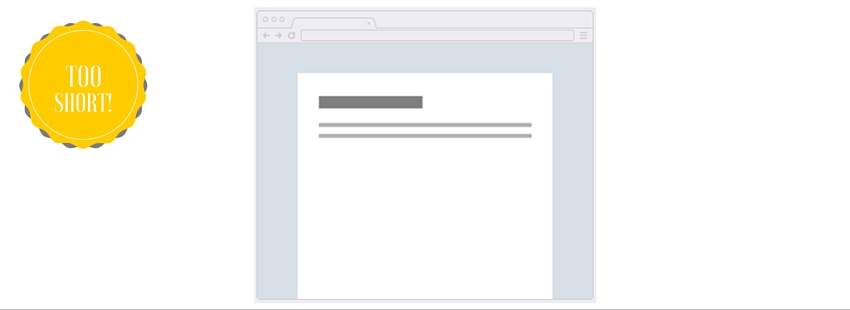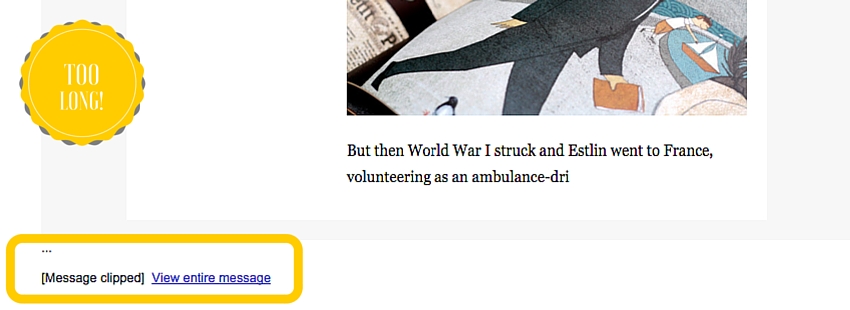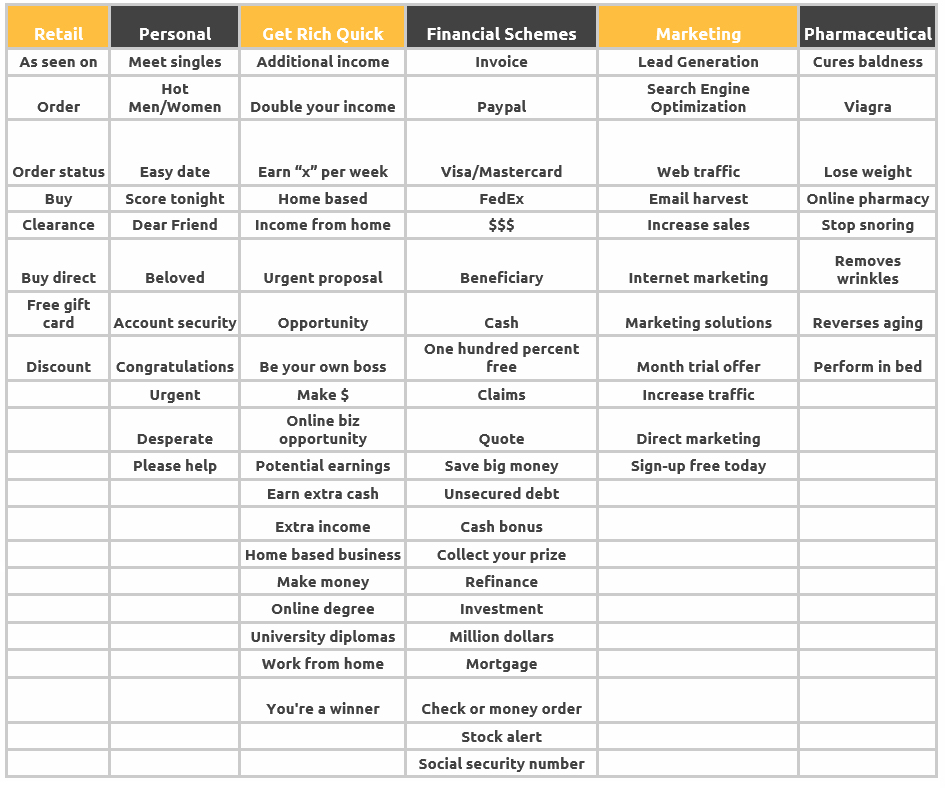
Imagine if Da Vinci finished painting the Mona Lisa and then…put it in his dark and dreary basement. Cobwebs aside, that’s kinda like what happens when your email lands in the SPAM box. All your hard work building your opt-in email list and designing the perfect email, gone.
In email, it’s the last mile that makes all the difference. This means convincing the Internet Service Providers (ISP’s), (think Gmail, Hotmail, Yahoo!, Orange), that people want your email in their inbox and that you’re not (gasp) a Spammer.
“Well I’m not a Spammer. So I’m fine, right?” Wrong. Some of our email sending habits can actually resemble those of Spammers without us even realizing it.
This article is designed to help you identify these habits and fix them so that your emails skydive right into the inbox.
So straight from the mouths of our deliverability experts at Mailjet, here are the 11 Major Reasons Why Your Emails Could Land In The SPAM Box.

#1 Your Subscribers Broke Up With You
People have subscribed to your emails to satisfy a specific reason. And it’s pretty easy to let them down. When this happens, they can report you as SPAM or unsubscribe from your email list.
Sometimes you did everything perfectly and the problem is them. But more often than not, the problem is you. Let’s reflect. Is it possible that you…
- Started emailing them about things they didn’t sign-up for? For example, you invited them to sign-up to receive your e-book but you also added them to your regular newsletter list.
- Started sending your emails too often without giving your subscribers the chance to change their email frequency preferences?
- Started sending your emails too little? Your contacts have a limited memory span. If you don’t communicate with them regularly they can forget who you are OR that they ever subscribed to your email.
When a person gives you their email address, it’s your responsibility to send them emails that are consistent with the promise you made to them at the time of subscription.
If not, they may use the unsubscribe and SPAM buttons against you. When ISPs see a high percentage of unsubscribes and/or SPAM reports, it can negatively affect your sender reputation, landing your emails in the SPAM box.
Depending on the severity, it could also get you blacklisted!
http://giphy.com/gifs/lol-deal-with-it-111vMuvOhtwD2U

#2 Your Subscribers Broke Up With You…And You Aren’t Dealing With It
Rather than unsubscribing or reporting your emails as SPAM, some readers may just choose to ignore your emails entirely. Whatever, right? Wrong. This can be equally as detrimental to your deliverability rate.
Recently, engagement-based filtering has become the method of choice for major ISPs (Gmail, Hotmail, Yahoo! and more) when detecting SPAM. This means that they are looking at how readers interact with sender’s emails (opens, clicks, new sign-ups etc.) to assess how desirable they are.
ISPs are doing this because they want to ensure that you are always having a better experience with their service. And part of a better experience is having only the emails you actually want land in your inbox.
So as you can see, the higher the number of inactive subscribers you send your emails to, the lower your engagement rate and the more your sender reputation suffers. 6 months of inactivity tends to be the common length of time for a subscriber to be considered inactive.
So dry those eyes and move on in 2 steps:
- Separate inactive email subscribers into a separate email list. From there, send these contacts special email campaigns designed to re-engage them with your brand
- For those who you really can’t get back, then it’s time to say bye bye bye. Delete the inactive contacts for good or (for those who still can’t let go) move them to a “do not use” email list
#3 You Bought An Email List (Facepalm)
If you read the previous two paragraphs (caught you, skimmer), then you can already start to understand why buying a list is a bad idea.
These people have not signed up to receive your emails and, when they do receive them, won’t hesitate to hit unsubscribe or mark you as SPAM. Red flag for ISP’s. Email lists that circulate on the internet also tend to be of very poor quality and riddled with spam traps like fake addresses or ones that are active but monitored by blacklists. Sending your emails to these addresses will result in hard bounces or possibly being blacklisted.
If you’re looking to build a quality, opt-in email list, Sumo’s List Builder feature is worth a serious browse.
#4 You Stopped Being Consistent
ISP’s don’t like change. That girl in highschool that changed her hair colour all the time? They don’t like her. Let’s explain. ISPs are looking for consistency in your email sending, and spikes in your metrics (including email sending volume, complaint or unsubscribe rates, hard bounces, etc.) tend to start smelling like Spammer.
For example, if you have a huge spike in the number of people you are suddenly sending your emails to, ISPs can assume that you purchased an email list or that your infrastructure has been hacked and someone is sending spam from your network.
Imagine that your current email list is 500 000 people, and grows by about 5 000 people per week. Now imagine that your company acquires a competitor who has an email list of 100 000 people.
If you combine these lists and suddenly send out a newsletter with 100 000 more contacts, ISP’s will find it suspicious. In this case you need to split up the new email list and add the new contacts into the original email list in batches.
Warming Up Your IP Address
Companies with a robust email list and active email sending activity (amongst other factors) can often become good candidates for using dedicated IP addresses to send their emails from. The downside of first moving to a brand new IP address though is that it doesn’t yet have a sender reputation with ISP’s – so they can’t tell if you are a good or spammy email sender yet.
To ensure that your emails are not immediately sent to the SPAM box when initially sending from a new ISP, you will need to send emails to a gradually increasing number of subscribers. This way ISP’s can assess your sending practices and start associating your IP address with a good reputation.
#5 Your Emails Are Too Small

Emails that are too small are likely to land you in the SPAM folder. Spammers tend not to be Content Marketers in disguise. They often stick to short phrases that get right to the point. For example: “Order watches, bags and jewelry at discount prices.”
Email on Acid advises that emails should be ≥ 500 characters to avoid being flagged as SPAM. If it really has to be below 500 characters, be sure to add a supporting image within the email.
#6 Your Emails Are Too Large

Emails that are too large are a pain for everyone. They may take a long time to load (frustrating your reader) or they may simply be truncated once they’ve hit their maximum size (frustrating YOU).
Gmail can be particularly unforgiving, displaying the first 102KB of the email and chopping off the rest. This means that essential elements, such as your calls to action, unsubscribe link and tracking codes may be removed.
Our advice? Reduce image file sizes by compressing them, adjusting their color and removing metadata.
#7 Your Emails Are Image-Only
Spammers love hiding the text of their emails within images to avoid detection of certain spammy keywords. ISP’s caught onto this and are now suspicious when they detect an image only email. Spammers aside, certain ISP’s block images by default. Which means that your subscriber could open an email that contains no content. (Cue the unsubscribe!).
The solution? To avoid looking like a spammer it’s recommended that images make up no more than 30-50% of your email content.
In addition, add ALT tags (or image descriptions) to your images. This way, if your image doesn’t load immediately, your subscribers will still understand what is meant to be represented.
#8 Your Emails Are Not Multipart
Are your emails composed of two parts: one in HTML, another in Text format? HTML is still not capable of being displayed on certain mobile devices, which is why a text version becomes necessary.
In addition, ISP’s actually compare the content of your HTML version to your Text version to ensure that they are the same. If you are using a quality Email Service Provider to create and send your emails, then these two versions should be created for you automatically.
If you are sending emails through SMTP or API, then you need to manually ensure that the two identical versions are present.
#9 Your Emails Use These Red-Flagged Words
Spammers are known for using certain words in their emails. So knowing what these words are, and minimizing their use (especially in the Subject Line), is important to avoid looking like a Spammer to our ISP friends and not misleading subscribers.

The list of spammy words is constantly growing and adapting; in part based on what people are identifying as spam via the "Mark as spam” or “This is junk” button in their inbox.
ISP spam filters might look for spammy phrases like “CLICK HERE!” or “FREE! BUY NOW!”. Then they'll assign points every time they see one of those phrases. Certain criteria get more points than others. Here’s a sample of criteria from SpamAssassin:
- Talks about lots of money (.193 points)
- Describes some sort of breakthrough (.232 points)
- Looks like mortgage pitch (.297 points)
- Contains urgent matter (.288 points)
- Money back guarantee (2.051 points)
If a campaign’s total “spam score” exceeds a certain threshold, then the email will go to the junk folder. The tricky thing is that "passing" scores are determined by individual server administrators, so unfortunately, what passes filters at some ISPs will not pass at others.
It’s important to understand that spam filters have become much more sophisticated than just filtering based on words. They focus, again, on engagement. Spammy words tend to be misleading, thus resulting in higher-than-normal user complaint rates, which affect sender reputation and ultimately, deliverability of future messages. For example, if a Subject Line includes the word "Free" in it, it better have something that's truly free, and not a gift with purchase or other false promise within the email.
For more information, here’s a full article on words that will trip the spam alarm.
#10 Your Emails Come From One IP Address
Most companies send two types of emails: Marketing (think newsletters) and Transactional (think automatic purchase confirmations). If you send both of these from one IP address and, say your marketing emails cause you deliverability problems, then your transactional emails will also end up in the SPAM box.
If your company is not sending from dedicated IPs, then ensure that your Email Service Provider offers the ability to separate your Marketing and Transactional mail streams onto separate shared IP environments.
As of late, ISP’s are also starting to give domain names a sending reputation too. This means that sending your Marketing and Transactional emails from separate domains (or sub-domains) is also becoming best practises.
For example, imagine you run an online e-shop selling cameras called “Cameras.com.” Your sender addresses with their different domains could look like this:
- Marketing Emails: hello@cameras.com
- Transactional Emails: hello@sales.cameras.com
#11 You Didn’t Authenticate Your Sending Domain
Authenticating your sending domain essentially means confirming that you are the sender you say you are. Email authentication is a way to ensure that an email provider (like Gmail and Hotmail) will be able to recognize the company sending incoming message.
Here are the common ways to authenticate your Sending Domain:
- SPF: Adds the IP addresses allowed to send email via your domain name in your DNS record.
- DKIM: Also based on the DNS record, this authentication solution is used to sign emails with a public or private key system.
- DMARC: This new technology allows the sender to check whether emails have been properly authenticated by the ISP or webmail.
Bonus Tip
Consider using an Email Service Provider. Keeping up to date with these constantly changing rules can be tedious and time consuming.
Not to mention takes away time from running your core business. Using a quality Email Service Provider, like Mailjet, can allow many of the above bad habits to be taken care of for you!
Add A Comment
VIEW THE COMMENTS